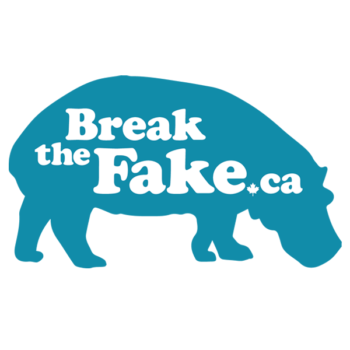To solve the misinformation crisis, we have to make fact-checking a habit
For decades, Canada has been a world leader in media literacy education. Today, though, our media world has changed: anyone can create and spread fake images, videos, websites and social media accounts, and every one of us has the potential to make things worse by sharing bad information with our family and friends.
Canadians agree that misinformation is a serious problem: MediaSmarts’ recent research found it was the top concern parents had for their children online, ahead of issues like cyberbullying and Internet predators. Research released by the Canadian Internet Registration Authority in February showed that 75% of Canadians come across fake news at least sometimes, and 70% are concerned that it could impact the outcome of the upcoming federal election. The problem is not just about debunking misinformation but how challenging it is to find out what is true online, with the result being that many young Canadians are cynical about reliable and unreliable sources alike. As a result these “digital natives” feel unable to use the networked technology they’ve grown up with to find information, or else they skip verifying anything altogether and hope for the best—leaving them easy prey for scams, conspiracy theories, and industry “astroturfing” campaigns.
To fix this, we need not only to teach young Canadians how to verify what they see online but to get them into the habit of doing it. Like buckling a seat belt, to become a habit something has to be quick and easy enough to do it every time. MediaSmarts’ Break the Fake program, which includes a workshop, lesson plans, tip sheets, and public service material, teaches four steps to verify online information. Each of these can usually be done in less than a minute, and most of the time we’ll get our answer by doing just one:
- Use fact-checking tools
- Consult other sources
- Find the original source
- Verify the source
The easiest way to verify information is to use fact-checking tools and see if someone else has already done it for you. Searching a fact-checking site like Snopes can tell you if something has been debunked or verified in under 30 seconds. But we can also cast a wider net and check other sources, such as a News search or a collaborative tool like Wikipedia, to find out the context and consensus around a story: Do reliable sources agree that something really happened, and do they mostly report the same facts? Does what you’ve seen fit with the consensus of experts in the field?
Not only do we need new tools for verifying what we see online, our old tools sometimes lead us astray. A single glance is enough to see the difference between the New York Times and the National Enquirer, but every tweet, Facebook post or Google search result looks the same. Social networks make this worse by giving more emphasis to the person who shared something with you rather than where it actually came from. Instead of judging something based on who shared it, we need to take 30 seconds to find the original source. If it isn’t one we recognize as being reliable, a search engine or Wikipedia will help us verify the source. Does it have a track record of confirming information before they publish it, and correcting mistakes when they make them? If a person is a supposed to be an expert, do they have credentials in the right field?
Misinformation is a big problem, but it is one we can solve. By taking a few quick, easy steps to verify what we see online—and making a habit of doing it every time we’re about to share or act on something—we can all help to Break the Fake.
Bring Break the Fake to your classroom: Media Literacy Week is taking place October 7-11 and MediaSmarts has free lesson plans, workshops, handouts, and other resources available to teach students how to tell what’s true online. Visit http://www.mediasmarts.ca/mlw to learn more.

Matthew Johnson, Director of Education at MediaSmarts


